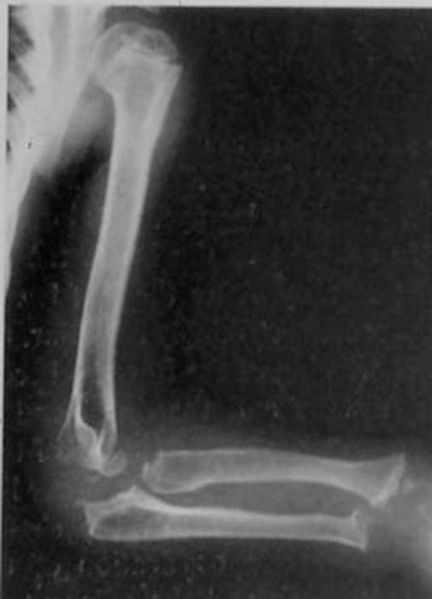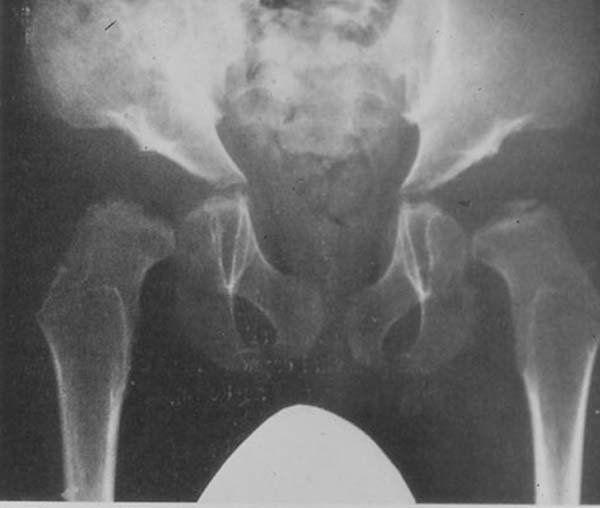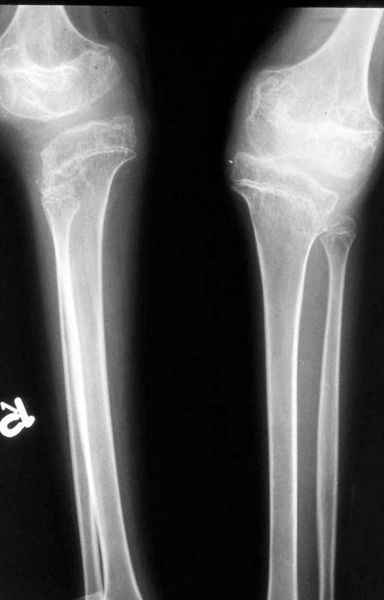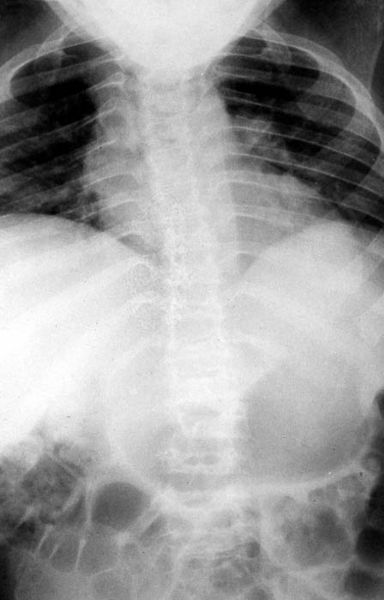Morquio's syndrome
| Morquio's syndrome | |
| ICD-10 | E76.2 |
|---|---|
| ICD-9 | 277.5 |
| OMIM | 253000 253010 |
| DiseasesDB | 30807 Template:DiseasesDB2 |
| MedlinePlus | 001206 |
| eMedicine | ped/1477 |
| MeSH | D009085 |
Editor-In-Chief: C. Michael Gibson, M.S., M.D. [1]
Please Take Over This Page and Apply to be Editor-In-Chief for this topic: There can be one or more than one Editor-In-Chief. You may also apply to be an Associate Editor-In-Chief of one of the subtopics below. Please mail us [2] to indicate your interest in serving either as an Editor-In-Chief of the entire topic or as an Associate Editor-In-Chief for a subtopic. Please be sure to attach your CV and or biographical sketch.
Morquio syndrome (referred to as mucopolysaccharidosis IV or Morquio) is a mucopolysaccharide storage disease (see also lysosomal storage disorder), usually inherited. It is a relatively rare dwarfism with serious consequences. When the body cannot process certain types of mucopolysaccharides, they build up or are eliminated, causing various symptoms.
Types
Two forms are recognized, type A and type B.
- Morquio type A is a deficiency of the enzyme N-acetylgalactosamine-6-sulfate sulfatase.
- Morquio type B is the deficiency of the enzyme beta-galactosidase.
Presentation
The disease is caused by an abnormal accumulation of mucopolysaccharides - in this case, keratan sulfate - in the body. Keratan sulfate is excreted in urine.
The symptoms vary from patient to patient, and may include hearing loss, cataracts, skeletal dysplasia, spinal instability, and minor respiratory issues, among others.
History
The condition was first described, simultaneously and independently, in 1929, by Luis Morquio in Montevideo, Uruguay, and by James Frederick Brailsford in Birmingham, England. They both recognized the occurrence of corneal clouding, aortic valve disease, and urinary excretion of keratan sulfate. Morquio observed the disorder in 4 siblings in a family of Swedish extraction and reported his observations in French.
Symptoms
The following symptoms are associated with Morquio syndrome:
- Abnormal heart development
- Abnormal skeletal development
- Hypermobile joints
- Large fingers
- Knock-knees
- Widely spaced teeth
- Coarse facial features
- Large head
- Star shaped chest (ribs flared)
- Compression of spinal cord
Laboratory diagnosis
As most mucopolysaccharidoses, Morquio syndrome exhibits alterations in white blood cells that are diagnostic, and might allow for screening procedures and cost-effective differential diagnosis in the future. These anomalies can be best studied with Wright stain, the routine dye employed in hematology laboratory. Neutrophils in Morquio's syndrome exhibit persistence of the azurophilia in its granules, which is explained by the deficient enzyme's inability to clear them from mucopolysaccharides used as a tags in the cells vesicular sorting system. Approximately 70 percent of the neutrophils exhibit this subtle alteration. Differential diagnosis must be made with mucopolisaccharidoses I,II,III,VI and VII.
Nonetheless, after this screening procedure has been carried on, quantitative enzyme determination assays must be conducted to verify the diagnosis, should any replacement treatment is available.
X-ray
Complications
Complications that may develop include:
- Heart failure
- Difficulty with vision
- Walking problems related to abnormal curvature of the spine
- Abnormal neck bones can cause spinal cord damage that can cause severe disease including paralysis if not caught early -- spinal fusion can prevent this
- Problems with urination
External links
- National MPS Society
- www.morquio.com
Template:Endocrine, nutritional and metabolic pathology Template:SIB fi:Morquion oireyhtymä




